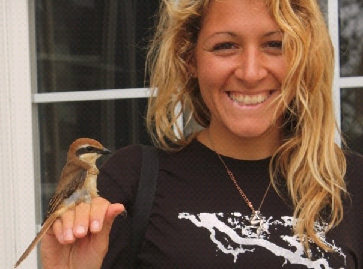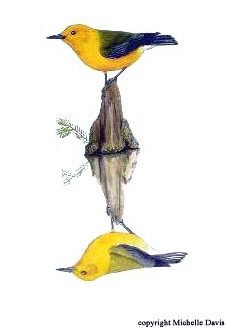| |
 |
Influences of anthropogenic
habitat alteration on stopover ecology of Nearctic-Neotropical
migratory birds along the northern coast of the Gulf of Mexico
|
Coastal areas are highly productive for taxonomically diverse groups of
organisms, and anthropogenic alteration of coastal habitats throughout
the U.S. poses a critical threat to these ecosystems. However, actual
ecological impacts of coastal development have remained difficult to
identify and quantify. Nearctic-
Neotropical landbird migration presents an intriguing opportunity to
study responses of bird communities to coastal change as eastern
landbirds utilize flyways leading them directly across the Gulf of
Mexico. Coastal landscapes, and specifically the northern coast of the
Gulf of Mexico, are potentially the most important links in the chain
of stopover areas for eastern migrants as the first refueling locations
for birds arriving in spring and last stopping locations before
departure in autumn. Tension is created between importance of coastal
landscapes for energetically constrained migrants and high development
rates at these locations. With increasing evidence that stopover
habitat may be limiting to populations, investigation of migrant
response to human-induced coastal degradation and its role in migrant
population dynamics is critical.
To examine influences of anthropogenic coastal alteration on migrant
stopover ecology, I will establish four study sites of varying
development intensities along the Mississippi coast east of Biloxi and
measure quality of these sites as resting and refueling locations for
stopping migrants. Weather surveillance radar will be used as an
indicator of migrant concentrations, and ground surveys will be
conducted to determine densities and species compositions. To measure
refueling and fat deposition rates, I will observe foraging behavior
and mistnet birds to obtain blood samples for plasma metabolite
profiling. I predict that highly developed stopover sites are of lower
quality and that birds utilizing these areas will demonstrate foraging
behaviors and metabolite profiles associated with reduced refueling
performance.
Background/Experience
|
After obtaining a Bachelor of Science
degree
in Conservation Biology/Wildlife & Fisheries from Louisiana
State University in 2007, I participated in many projects involving
migration and anthropogenic pressures on bird populations that helped
me to focus my research interests. For example:
- With the Smithsonian Migratory Bird
Center, I traveled throughout the U.S. and Caribbean to obtain samples
for stable isotope analysis for determing population connectivity of
six warbler species. Additionally, I attached light-level geolocators
to multiple species to log data on bird movement for reconstructing
migration routes and determining wintering locations.
- With the Australian Wildlife
Conservancy
and Wollongong University, I assisted in data collection for a study on
impacts of changes in grazing and fire regimes on conservation
management of semi-nomadic tropical savanna grass-finches including the
endangered Gouldian Finch.
- With PRBO Conservation Science, I
served
as a member of the fall landbird migration research crew at the
Farallones National Wildlife Refuge on Southeast Farallon Island
(SEFI), California, to assist in gaining an understanding of migration
patterns, bird use of stopover sites, and year to year variability in
population trends.
|
 |
|
